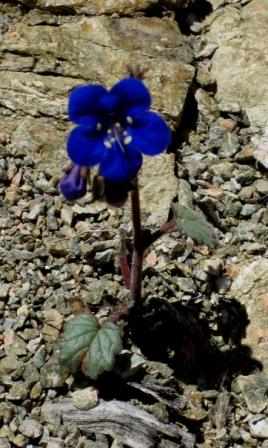
There are people who are fascinated by plants and people who are fascinated by the science of growing plants. While I love plants I must confess that I consider myself to reside more firmly in the latter group that the former. I do love to see the beautiful flowers on an apple tree in the spring, but I’m more fascinated by the nitrogen, phosphorus, potassium and other elements that the tree obtains from the soil. I like to contemplate the complex ecosystem that surrounds the tree, including the tree’s pests and the possible things that we can do to protect the tree from pests. I love to learn about insecticides, herbicides and fungicides, and I especially love to learn about alternatives like beneficial insects that may be used to control pests. Histories that cover fertilizers and pesticides are pleasure reading.
One of the most important things to ever happen to the world as we know it was the discovery of a process to take nitrogen from the air so that we could use it as a fertilizer. During the 1800s we discovered that applying nitrogen to our soils made plants grow really fast. Though this nitrogen could be supplied with manure we quickly learned that Peruvian Guano and Chilean nitrates had more concentrated nitrogen and so less needed to be added to fields to get bigger responses. Incidentally we could also use the nitrogen from these sources for bullets and bombs. Nitrogen is a cornerstone of most conventional explosives. Unfortunately these sources of nitrogen did have a drawback, they are not renewable resources. You may say — Hey, Guano’s renewable! — But you’d be stretching the truth. You see, guano is aged manure where the nitrogen has had a chance to become concentrated.
Anyway, by the time the 20th century rolled around we had used up much of the nitrogen available from South America and so we (and by we I mean the world in general) were hurting for nitrogen — particularly Germany. Germany had a feeling there was going to be a war and she needed a way to get nitrogen other than sailing all the way to Peru or Chile. So she put money into research. Pretty soon two researcher, Haber and Bosch, came up with a method to take nitrogen directly out of the air and make it into ammonia. Once present in ammonia it could then be used to make any number of other nitrogen based compounds, from fertilizers to bombs.
Coincidentally, Haber is also known as the father of chemical weapons. He led the German poison gas program and had a hand in developing such things as mustard gas. He was considered to be a patriot, but, born a Jew, the rise of Hitler wasn’t good for him and he was forced to leave in the early 1930s.
The story of Haber and Bosch is absolutely fascinating, not only because of the colorful characters, but because their discovery is, arguably, the most important factor in the increase of the worlds population over the last century. The best book that I know of on this topic is Enriching the Earth by Vacliv Smil. It’s a great book, but it does get a little technical. But my dad (he’s a chemist) showed me another book yesterday that is much more entertaining and readable than Smil’s book while retaining most of the pertinent science. It’s called The Alchemy of Air by Thomas Hager and, if your interested in fertilizers and the people who first developed them, then this is a must read.










